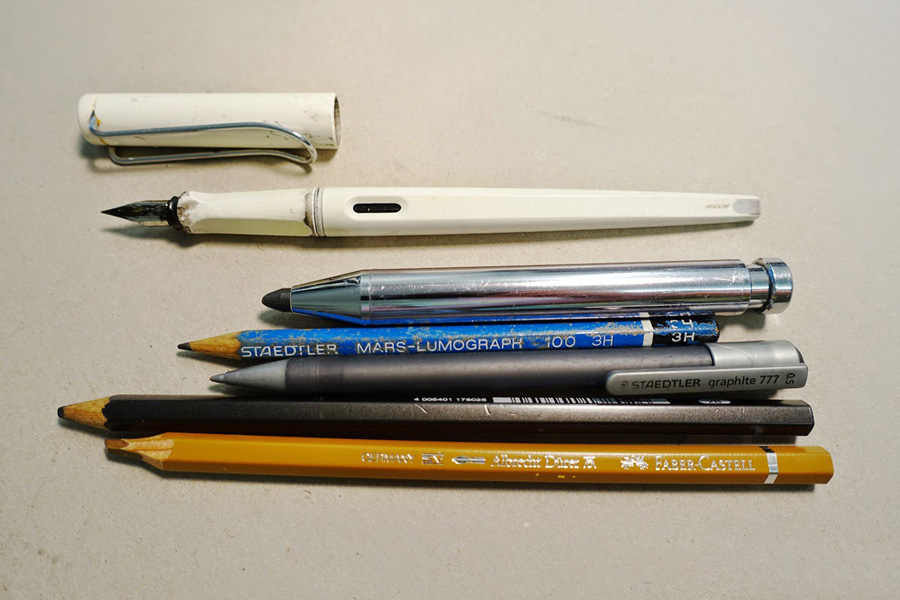
This week and next we are looking at setup in my Foundations online class. Setup seems to be a very contentious issue as there are lots of advocates for an ink-only approach! While I have great respect for the arguments in favour of ink only, I have generally used some form of setup.
I use setup because I WANT to, for me it is a tactile response to my subject – I love feeling the edges and respond to what I see with a pencil in my hand…and love having a record of this initial line on my page.
A number of people have asked about my red lines – it was a fad I went through for many years – using a 0.5mm mechanical red pencil lead that was very visible in my sketches. I thought it would be good to share here on my blog… and a few other thoughts on using pencils.
So time to go back into the archives…
My background as an architect is grounded in loose design sketches in ink with lots of restated lines – but when I started sketching I tried to clean my lines up and to do that I used pencil setup lines.
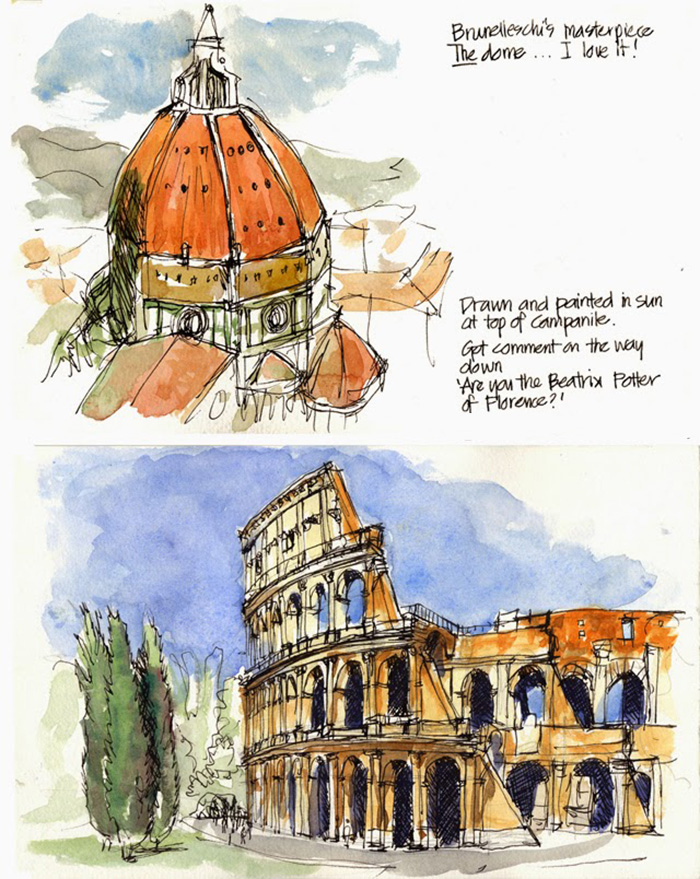
Here are two examples of two approaches from my first big sketching trip in 2007. Super quick restated lines when I was in a rush and pencil setup when I wanted to be accurate and had time
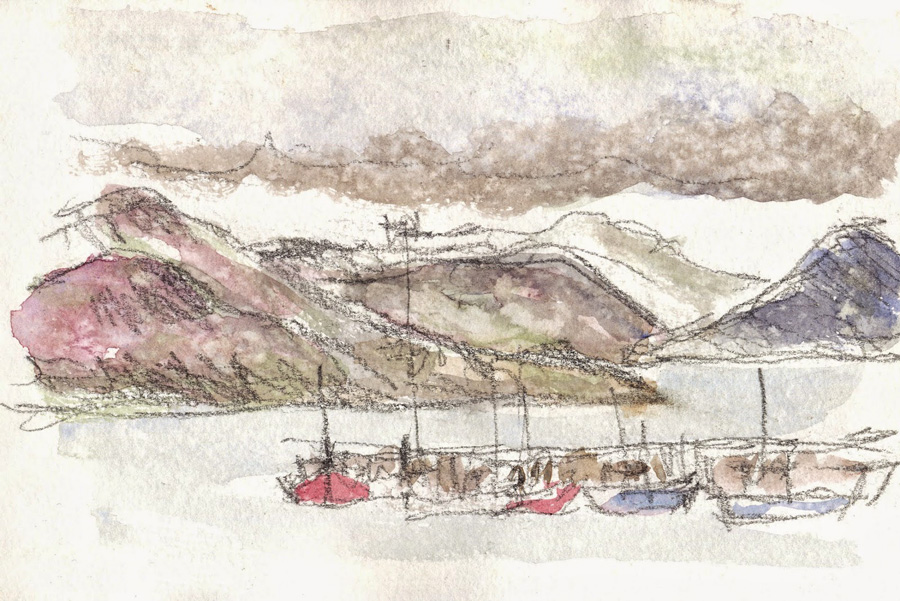
For years I have made many statements that ‘I am an ink girl ‘- I love my ink lines and I don’t really like pencil and really dislike smudgy media… but it is amazing to discover that in that initial sketching trip I did a number of pencil sketches – sometimes with a big chunky pencil (like this one of Ullapool in the rain)…
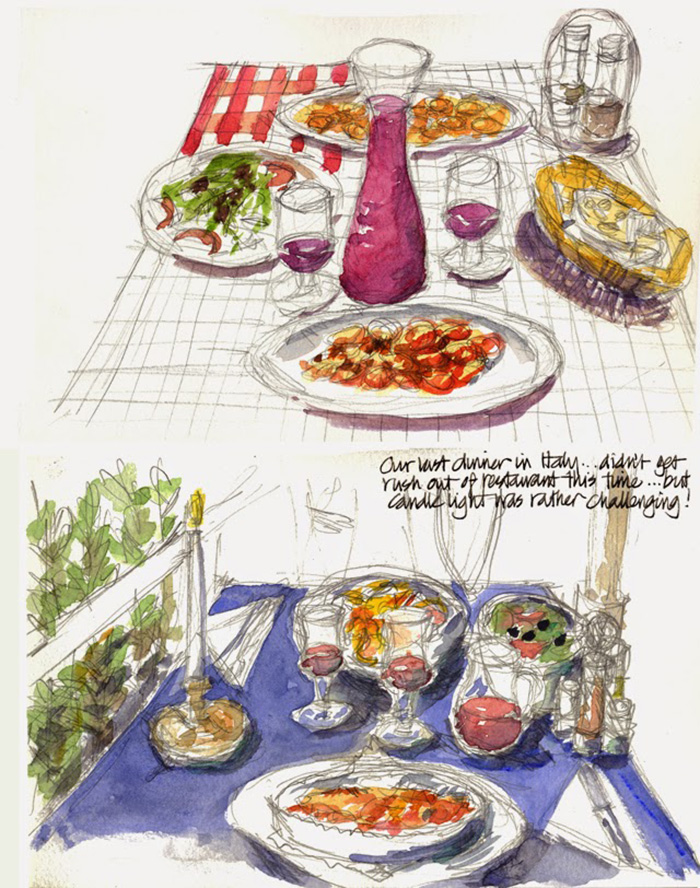
and these ones with a B pencil from a few Rome dinners from the same trip…when I started sketching my meals! (Hmm, my work has changed a lot over the years hasn’t it?)
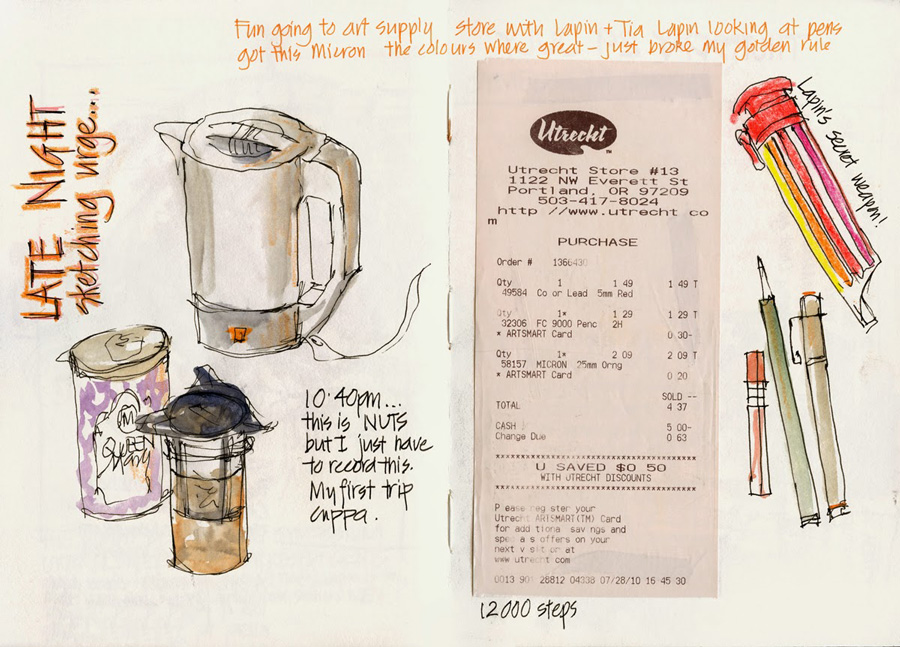
In 2010 I purchased some 0.5 red mechanical pencil lead as a souvenir of an art store visit with Lapin. We were both in Portland for the USK symposium and I wanted a small item to remind me of the historic occasion. I had never come across these leads before…and I really didn’t know how I would use them.
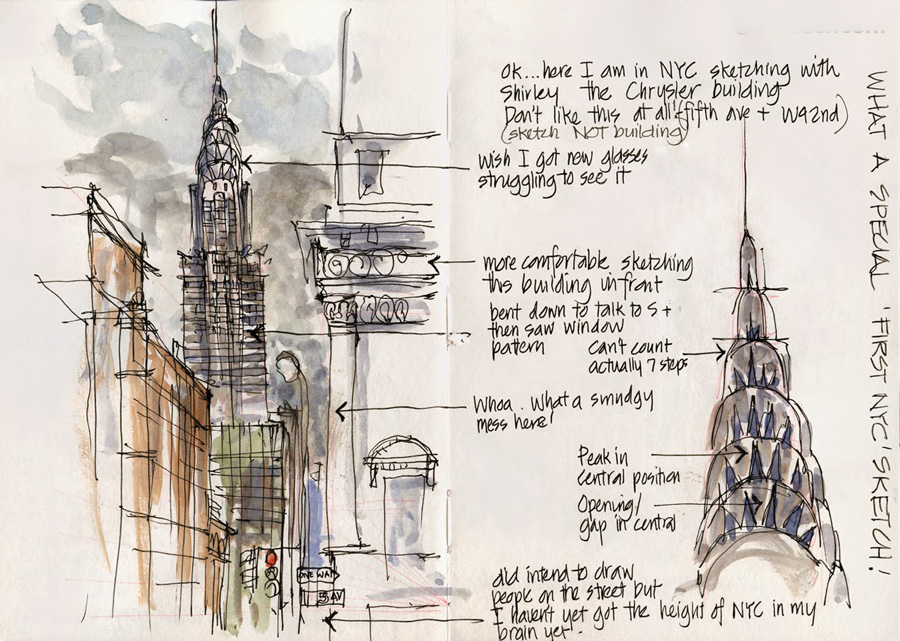
At the time I was using a very hard 3H graphite pencil for basic setup but when I lost this pencil a few weeks later in NYC, I only had the red leads with me… so started using them. I decided that I liked them! As sketching for me is all about the process, I do not care that my setup is visible.
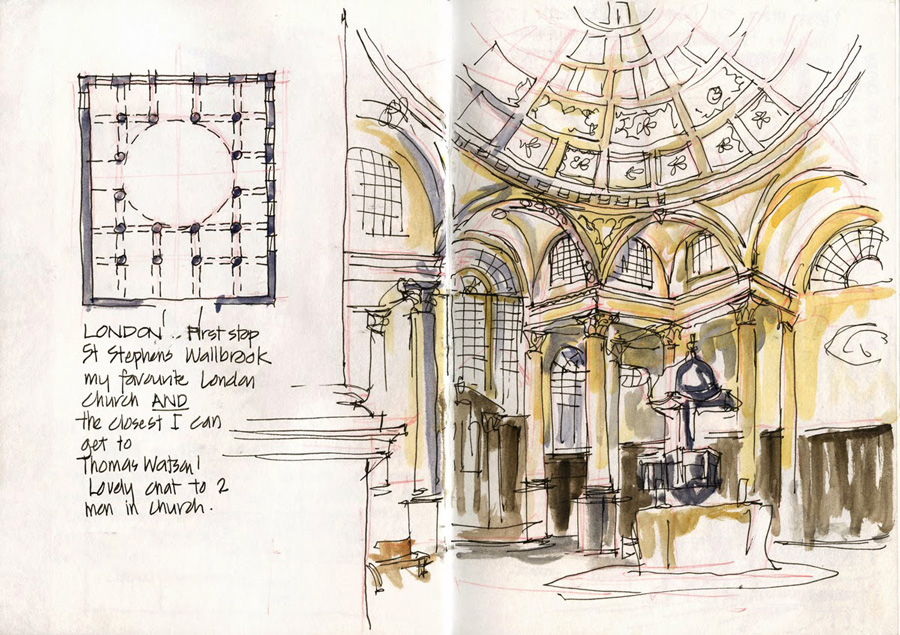
It then stuck – I loved the way it recorded my initial lines and it helped me gain more confidence with my ink lines and to tackle more complex architectural subjects. (Sigh, I love St Stephens Wallbrook in London!)
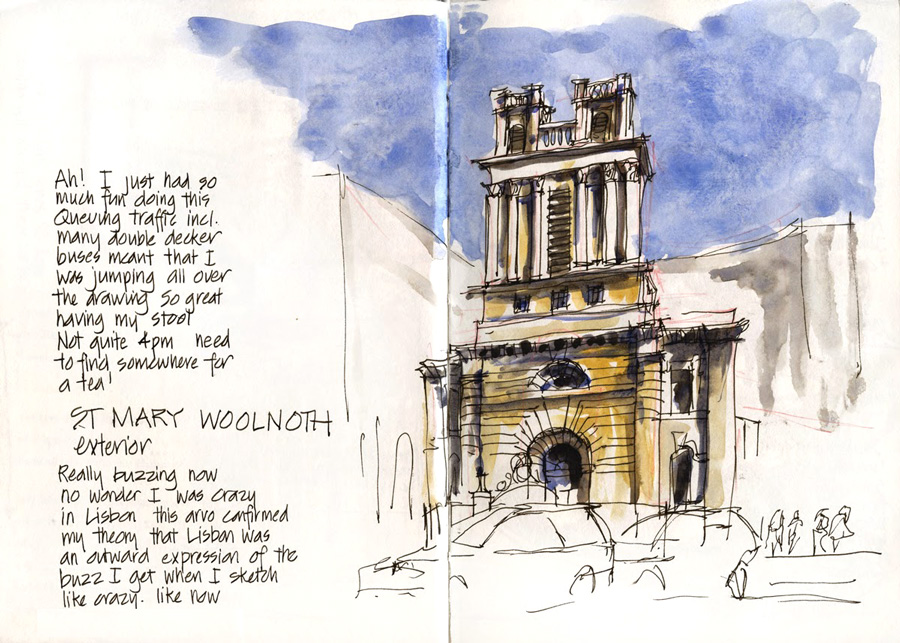
Sometimes the lines were hardly visible. (Sigh, love St Mary’s Woolnoth in London too!)
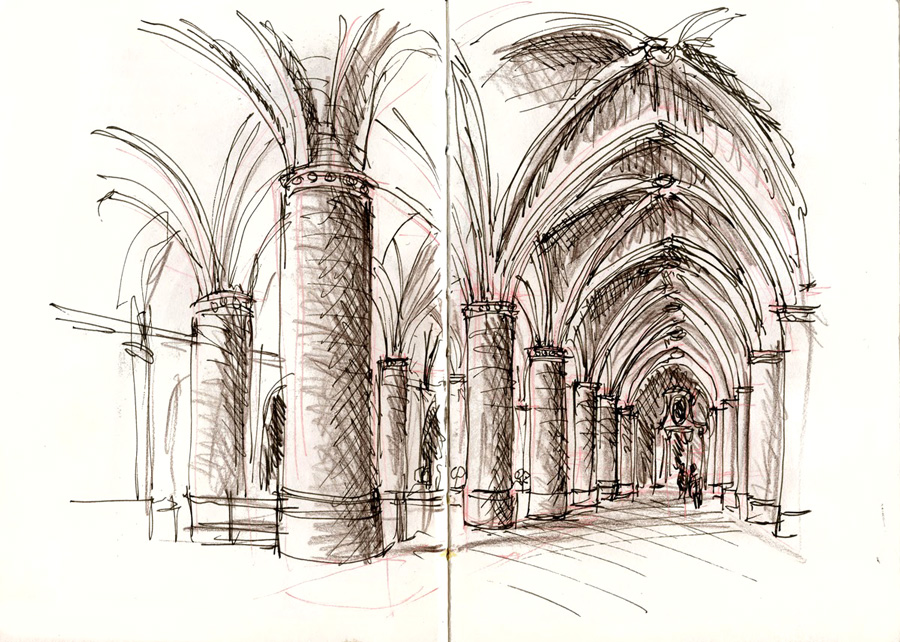 On other occasions they were a big part.
On other occasions they were a big part.
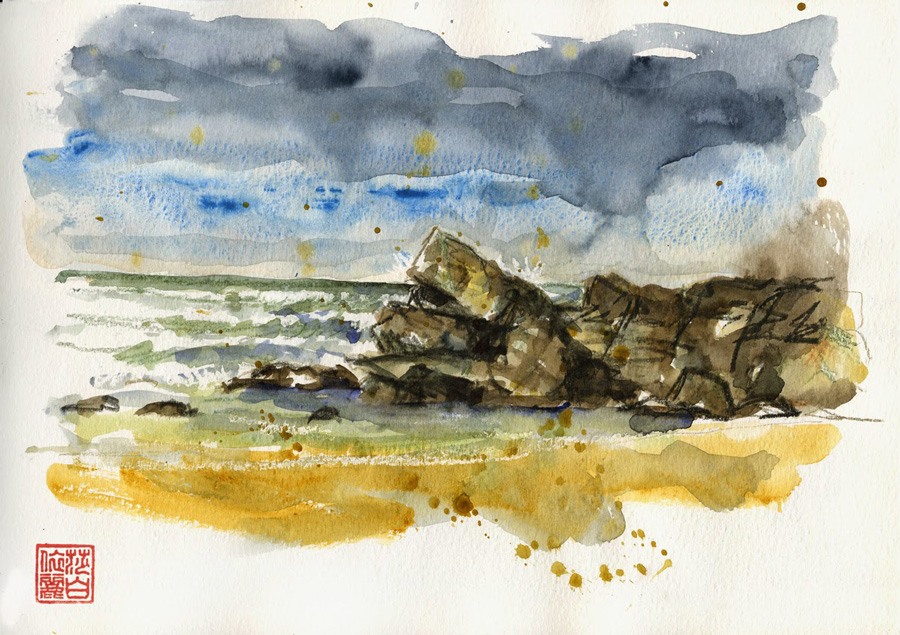
And then at the beginning of 2013 something strange happened. I left my full time architectural job and stopped using my pen at almost the same time. When at the beach for a long holiday I discovered I enjoyed working with pencil more – particularly for seascapes.
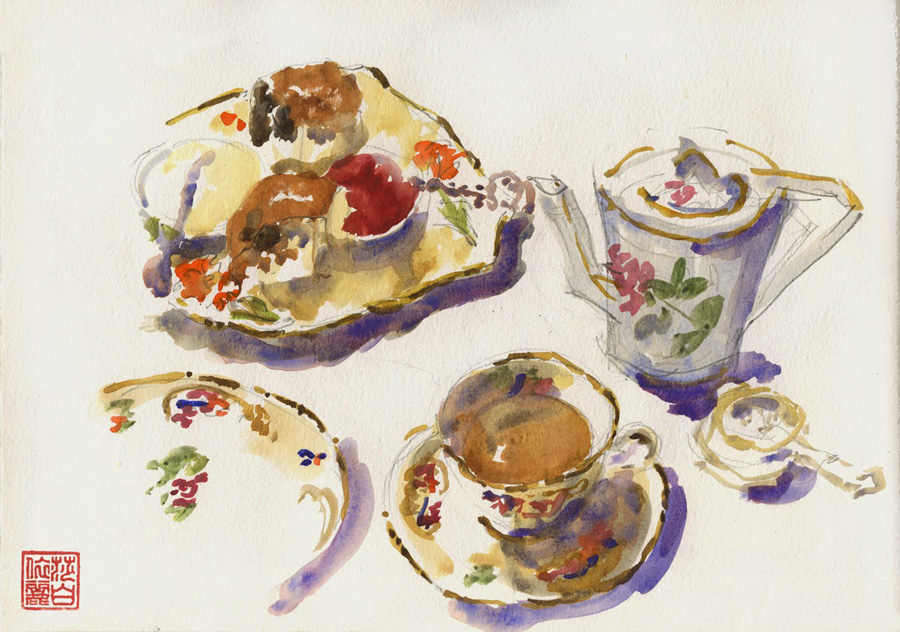
But it also extended to tearoom sketches as well.
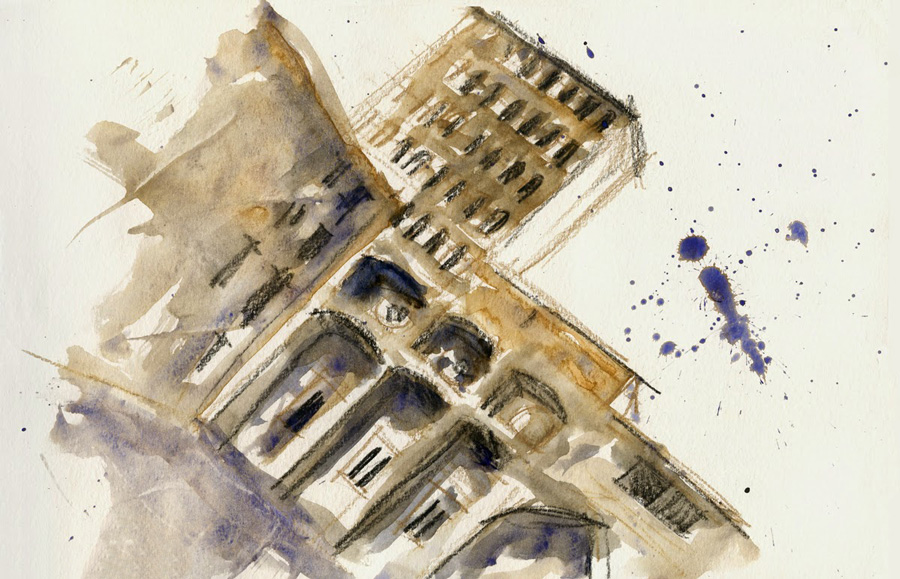
And I found that I could work faster and more confidently with water soluble pencil lines when in Barcelona that year.
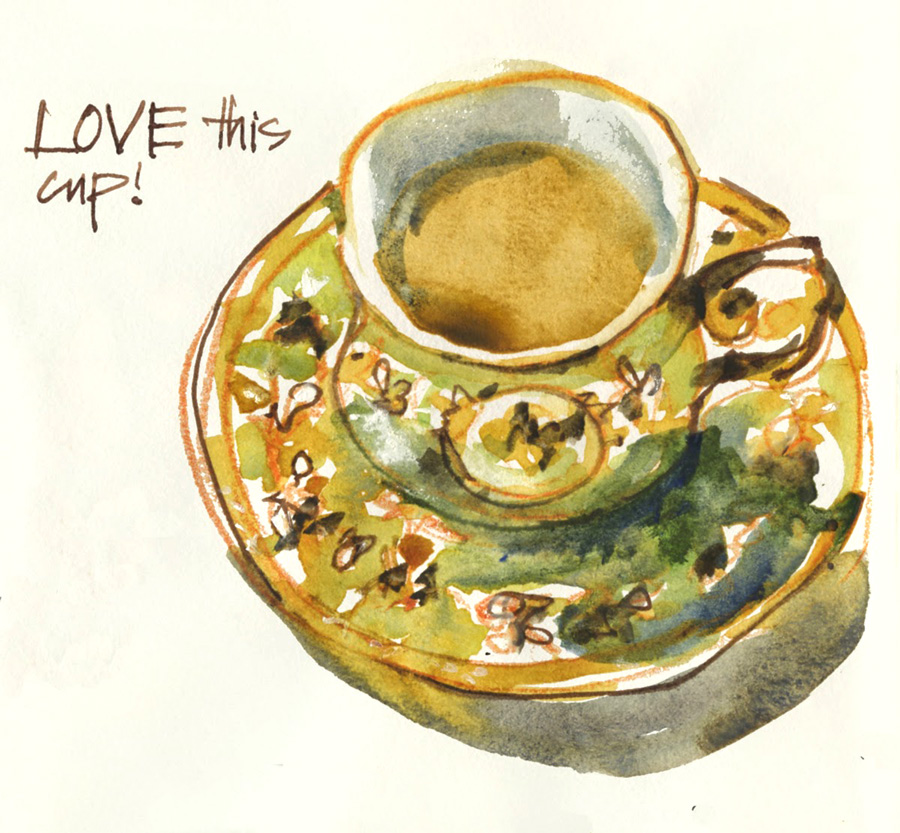
And well, these days…anything goes. Sometimes I use watercolour pencil for setup, sometimes I start with paint, sometimes I work just in ink.
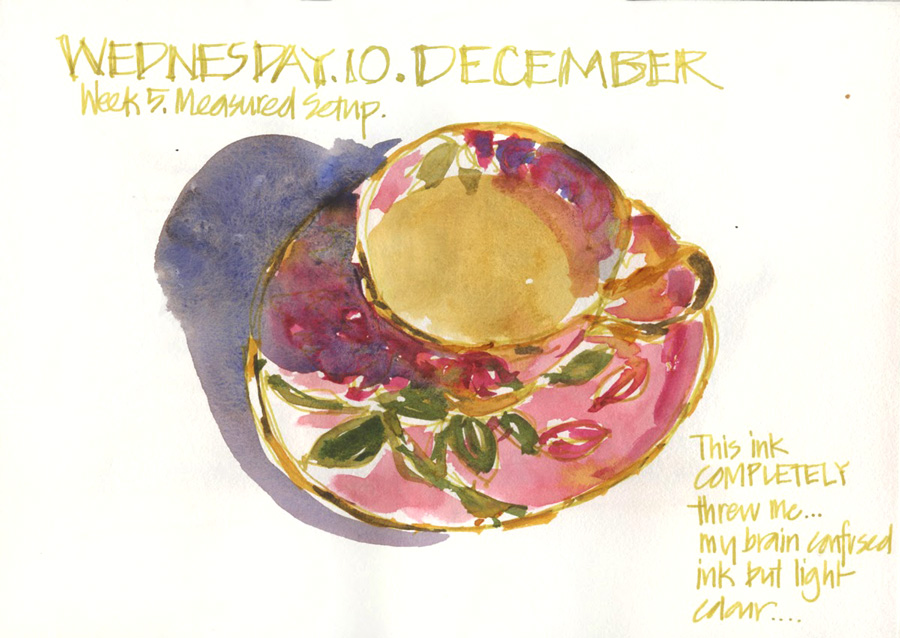
And who knows how working with coloured ink will change the game as well! I had lots of interesting thoughts today while out sketching such as “what really is setup anyway?” I have REALLY enjoyed looking at setup for these two weeks in my online course and next week’s lesson on some looser approaches to setup has been a lot of fun to put together.
The important thing is not whether you are using the ‘right’ approach or not (what is it anyway?) but the fact that you have started and are sketching. Keep going and have fun.
Don’t pressure yourself into doing this or that because you feel you have to! I am a firm believer that if you enjoy the creative journey, things will come naturally. I tried many times of the last 8 years to give up my ink lines and work just with watercolour… but when the time was right it just happened.
Keep going and have fun!
(oops, I am repeating myself!)




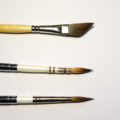
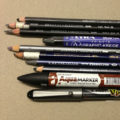
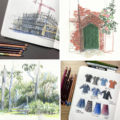
9 Comments
Somehow I find I miss the "fun." I get too caught up in what I can't do and can't deliver versus what I see in my head. Egads! But I sure enjoy your philosophies, Liz. The sketches, as always, are fabulous.
This is a wonderful post. Thanks for sharing great sketches and your experiments. Inspiring.
Wonderful blog post Liz! i found in working for SNF this past week that I liked the visual effect of the set up lines in the finished work. I have always admired sketches more than more finished art because there is evidence of the artist thinking and process and the addition of the guide lines adds a verve to the sketch that I find pleasing. Enjoying your class and blog posts very much!
thanks Sherry!! Letting go of the expectations that the result on the page will look like what is in my head was a big break through. When you let watercolour do its own thing – the result on the page is something you could never dream of!?! the happy accidents become joyful indeed!
thank you Chris!
totally agree with you Janette – you engage more with the artist and their process!
So glad you are enjoying the course!
yes- the preliminary drawing in pencil of where everything will be… as opposed to drawing everything in pencil and then tracing over with ink
Hi Liz – I have just been reading through your blog. This may seem a silly question, but what exactly is 'set up' ? I am assuming it is a faint line drawing of what is going to be in your sketch, ie. as if it's in a picture frame and you are working out the outlines and boundaries of what your end sketch will be. Am I correct? Thanks, Gara
I love the set up lesson in foundations course. I found myself really relying more on plumb lines to get my angles right. ( or slightly more right). That was a breakthrough learning for me.
NEWSLETTER
Subscribe for first notification of workshop + online classes and more.